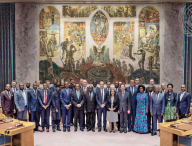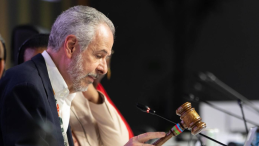It is no secret that India-Japan relations have been on a strong positive trajectory over the past 18 months. Soon after taking office in 2014, Prime Minister Narendra Modi made Japan his first foreign destination outside of India’s immediate neighborhood and while in Tokyo, he and Japanese Prime Minister Shinzo Abe upgraded their countries’ relationship to what they called a “Special Strategic and Global Partnership”. Indeed, with a broad array of common or complementary interests ranging from their perceived need to respond to the rise of China to the need to manage their opposite demographic and economic trajectories (India has a large youth population and a rapidly growing but capital-poor economy, whereas Japan has an aging population but a long-stagnant yet capital-rich economy), the two countries have numerous potential avenues for mutually beneficial cooperation.
At the time of Modi and Abe’s first official meeting as prime ministers in 2014, the two sides agreed to deepen their cooperation in a wide range of areas such as defense, nuclear issues, economics, and people-to-people exchanges. From the Indian perspective, the meeting was widely deemed a success, particularly in terms of Abe’s pledge to generate roughly $30 billion worth of Japanese official development assistance (ODA) and foreign direct investment (FDI) into India over a five-year span. Yet there had still been areas with visible gaps between the two sides, for instance the failure to bring to a conclusion lengthy negotiations around civil nuclear cooperation and the Indian refusal to upgrade the defense and foreign ministries’ “two plus two” dialogue to the ministerial level. Indeed, these shortfalls had been symptomatic of a recurrent pattern in the bilateral relationship in that lofty commitments of increased cooperation were often not matched by sufficient attention to the minutiae of how such promises would be turned into reality.
The second prime ministerial meeting between Modi and Abe, which took place in Delhi in December 2015, appeared to move forward on a number of big-ticket items. Several days before Abe’s arrival, Delhi announced that it had accepted a roughly $15 billion Japanese plan to build India’s first high-speed rail, choosing the Japanese bid over a Chinese proposal. The deal appeared to be a win for both sides, with Japan beating out its most significant rival in implementing the project, while India is now set to benefit from Japan’s widely acknowledged prowess in railway technology. Once Abe arrived in India, the elusive civil nuclear agreement between the two governments also appeared to approach a conclusion, with the two leaders announcing that the deal would be signed pending the finalization of technical details.
Still, it bears repeating that grand pronouncements by heads of governments frequently fail to produce any real change on the ground once the media attention surrounding an official visit wanes. Although friendly rhetoric and gestures have an important place in international relations, the India-Japan relationship has long been hampered by a lack of concrete and ambitious action to follow through on promises. Despite the fact that the two countries have pledged to improve their economic cooperation for over a decade, their bilateral trade has remained paltry, with both countries having a far more robust economic relationship with China, which is also a major strategic competitor for both sides. As such, rather than patting themselves on the back, the Indian and Japanese governments must now turn to the difficult task of translating words into action. For instance, the agreement in principle on civil nuclear cooperation is certainly a positive step forward, but, as the saying goes, the devil is in the details, and those are yet to be worked out. Similarly, Abe’s promise of Japanese FDI will be heavily reliant on the private sector, so the natural question to ask is how Japanese firms—which tend to be more risk-averse than their Korean counterparts, whose ventures in India have been largely successful—can be incentivized to invest in an Indian market that lacks the level of infrastructure, predictability, and efficiency that these firms are used to at home. There are many such outstanding questions but the most important is, how soon will the Indian and Japanese people be able to palpably reap the benefits of their countries’ political embrace?
In trying to meaningfully answer these questions, the relative lack of rigorous, policy-relevant academic analysis on the India-Japan relationship is problematic. Whereas several of India’s other important international relationships, for instance with Pakistan, China, and the United States, have been studied and written about at great length, there remains a dearth of literature on India-Japan relations that would contribute to a wider debate on the promise and pitfalls of strengthened bilateral ties. In this context, the edited volume Poised for Partnership: Deepening India-Japan Relations in the Asian Century (Oxford University Press India, 2016) will help fill this gap and provide analysis of the drivers and the potential of a strong India-Japan partnership in the fields of economics, energy security and climate change, defence and security, and global governance for years to come.
In doing so, the volume acknowledges not only the boundless opportunities for cooperation that exist between the two countries, but also the real challenges that preclude them from fully translating intent into outcomes. Chief among these challenges are a mutual wariness of antagonising China; cultural differences in the way business, politics, and society operate; and basic normative differences over key issues such as climate change and nuclear energy. As a true accounting of the potential of the India-Japan partnership, the volume does more than exhort the two countries to embrace each other ever more tightly in their proclamations. It also acknowledges that actions speak louder than words.
Access Poised for Partnership here.
The volume editors are grateful to the Sasakawa Peace Foundation, which funded this project. A modified version of this article was originally published by the Oxford University Press Blog.



